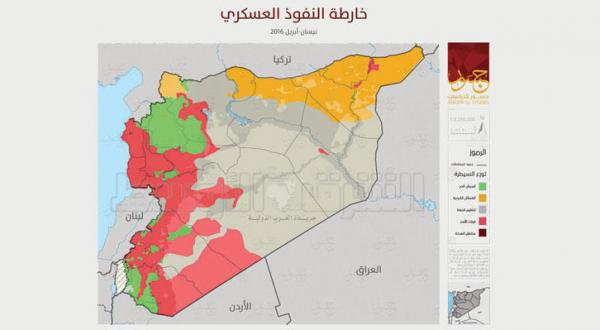The flames of the Syrian city of Aleppo are still burning despite the Russian announcement made yesterday about the possibility of including the city in the truce which was agreed upon by Moscow and Washington at the end of last week. Meanwhile, international sources have said that the part that is controlled by the Syrian opposition was struck by more than 300 air strikes during only ten days.
Maps published by Asharq Al-Awsat illustrating the distribution of influence on Syrian soil showed that the regime’s advance significantly declined in April after Russia’s announcement that it was withdrawing the bulk of its forces from Syria.
These reports reveal that ISIS controls 49% of Syrian territory while the regime controls 27%, but the inhabited areas reduce the actual control of ISIS and the regime to 15% each. The survey results also show that Kurds control 15% of Syrian territory and this is followed by the Free Syrian Army (FSA) and Al-Nusra Front which control 8%. However, these percentages are falling by 1% respectively.
The Director of the Syrian opposition “Bridges” Centre that prepared the reports, Mohammad Sarmini, said these figures mean that the regime “did not benefit from Russian support”.
Sarmini said that he considers the division of the conflict zone among parties to the conflict, which include the regime’s forces, the opposition, Kurdish militia and ISIS, to be “a temporary situation as a result of the ongoing war, and therefore talk of dividing Syria cannot be built upon it. ISIS, in particular, cannot be a part of Syria…In addition to this, the opposition is against the idea of division and considers the Syrian regime as illegitimate. Therefore, it cannot continue to rule Syrian territory against the will of the Syrian people”.
